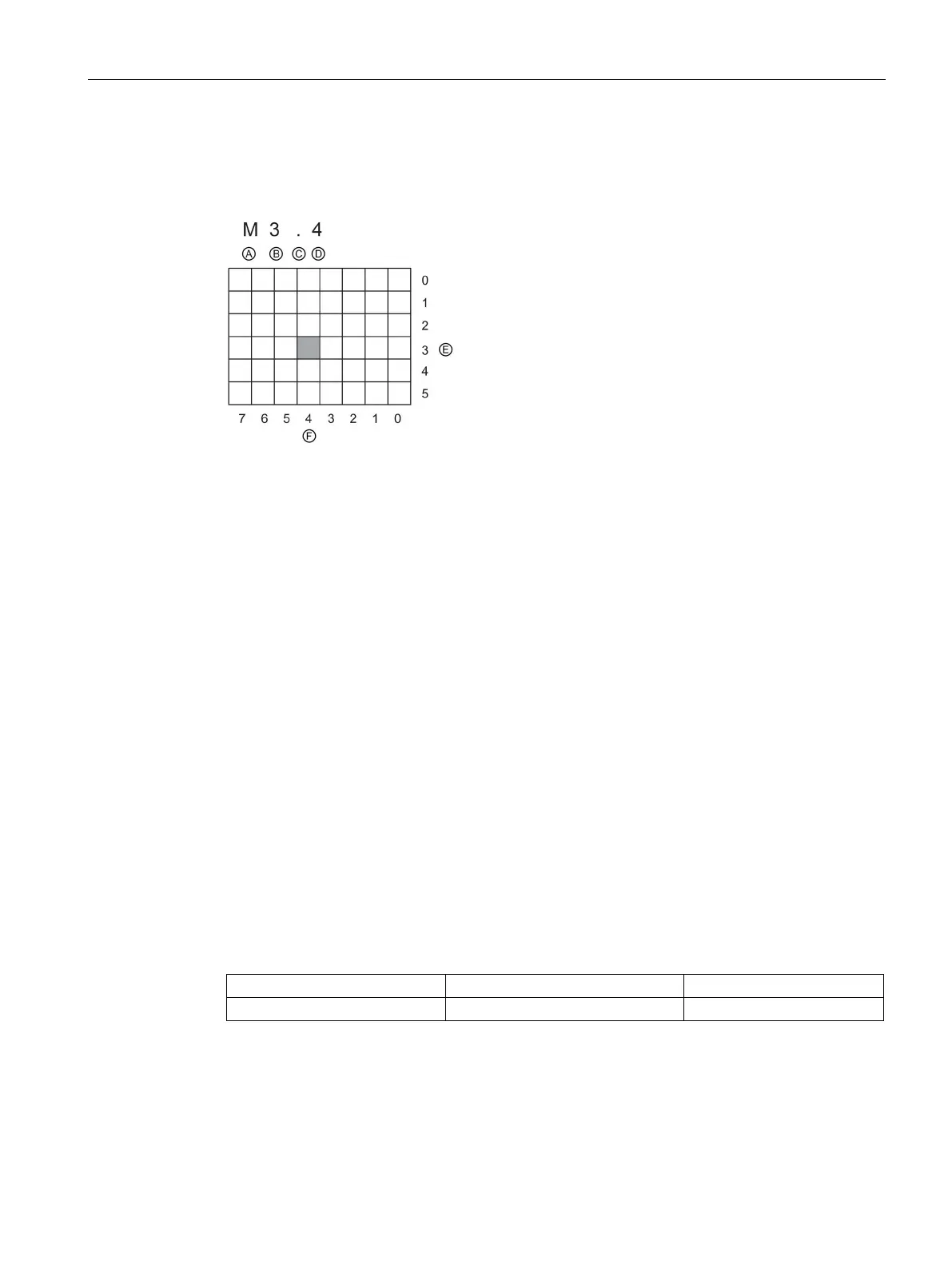PLC concepts
5.2 Data storage, memory areas, I/O and addressing
S7-1200 Programmable controller
System Manual, V4.2, 09/2016, A5E02486680-AK
119
When accessing a bit in the address for a Boolean value, you do not enter a mnemonic for
the size. You enter only the memory area, the byte location, and the bit location for the data
(such as I0.0, Q0.1, or M3.4).
Bits of the selected byte
Bit location of the byte (bit 4 of 8)
In the example, the memory area and byte address (M = bit memory area, and 3 = Byte 3)
are followed by a period (".") to separate the bit address (bit 4).
Accessing the data in the memory areas of the CPU
STEP 7 facilitates symbolic programming. Typically, you create tags either in the PLC tag
table, a data block, or in the interface of an OB, FC, or FB. These tags include a name, data
type, offset, and comment. Additionally, in a data block, you can specify a start value. You
can use these tags when programming by entering the tag name at the instruction
parameter. Optionally you can enter the absolute operand (memory area, size and offset) at
the instruction parameter. The examples in the following sections show how to enter
absolute operands. The % character is inserted automatically in front of the absolute
operand by the program editor. You can toggle the view in the program editor to one of
these: symbolic, symbolic and absolute, or absolute.
The CPU samples the peripheral (physical) input points just prior to
the cyclic OB execution of each scan cycle and writes these values to the input process
image. You can access the input process image as bits, bytes, words, or double words. Both
read and write access is permitted, but typically, process image inputs are only read.
Table 5- 22 Absolute addressing for I memory
I[byte address].[bit address]
Byte, Word, or Double Word
I[size][starting byte address]
By appending a ":P" to the address, you can immediately read the digital and analog inputs
of the CPU, SB, SM or distributed module. The difference between an access using I_:P
instead of I is that the data comes directly from the points being accessed rather than from
the input process image. This I_:P access is referred to as an "immediate read" access
because the data is retrieved immediately from the source instead of from a copy that was
made the last time the input process image was updated.

